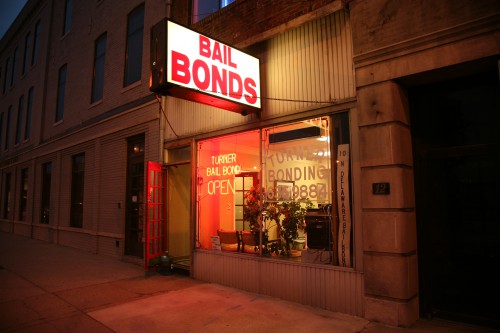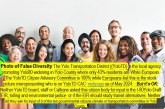 By Margaret Dooley-Sammuli
By Margaret Dooley-Sammuli
As its name suggests, California’s cash bail system is all about the money. It rewards the haves and punishes the have-nots, disproportionately harming communities of color, fails to adequately assess whether a person poses a public safety or flight risk, defaulting instead to keeping people in jail through high bail amounts, and costs millions in taxpayer dollars each year, while insurance company-backed bail bonds agents rake in millions.
How does cash bail work?
California’s bail system was designed to make sure defendants — people who have been arrested , but not convicted of a crime — show up to court as their case moves forward. Judges are not required to set money bail as a condition of release, but they can and are able to set the bail amount. When a judge doesn’t set bail, a person may be released on his or her “own recognizance.” That is, they promise to return to court when required and are released with or without conditions until their case is resolved. When a judge does set bail, the defendant must pay all of the money up front to earn release from jail, with the promise of reimbursement afterwards, excluding fees. Judges typically do not know whether the bail amount they set will keep a person incarcerated or allow the person to be released.
Alternatively, and more often, defendants can turn to a private bail bond company, which typically charges defendants a nonrefundable fee equal to 10% of the total bail amount. In exchange, the bail bond company promises to pay the full bail amount to the court if the defendant does not return to court. However, unlike individuals, the company itself is not required to pay the money up front. This is where the profits come in.
In California, the median bail amount is $50,000, compared to $10,000 average nationwide. How many people do you know that have $50,000 just laying around? Probably not many. And even if someone’s bail amount is lower than California’s median bail amount, for some, $500 in bail may be just as impossible to get as $50,000.
Profits over justice and safety
Although the bail industry claims to provide a service to the government at no cost, the fact is that we all pay a high price — in both taxpayer dollars and human costs.
As of June 2015, over 60% of California’s jail population — or about 45,000 people — had not been convicted of any currently accused crimes. Some of them are there simply because they cannot afford the high cost of bail. Meanwhile, wealthy defendants, including some who may pose a safety or flight risk, are able to put their houses up as collateral or even just write a check and walk free until their case is resolved.
This inherent injustice in the money bail system has a more serious impact on people of color than on white people because of racial bias at every step of the system, from policing tactics to courtroom decisions. Bias sometimes leads to higher bail amounts for people of color than for their white counterparts even when they are accused of similar offenses. Remaining in jail while your case is pending dramatically increases your chances of being convicted and receiving a harsher sentence than those who were able to secure release from jail.
These members of our communities are forced to make an impossible choice: sit in jail while their cases move forward, risking their jobs, houses, and families’ wellbeing; or take a plea bargain for a crime they may not have even committed so they can get out of jail fast to get back to their jobs and families. Those with slightly more means have a third terrible option: pay big money to a bail bonds company — money they’ll never get back — and risk insurmountable and devastating debt, which can push families into poverty.
All the while, Californians are financing this injustice.
It costs well over $100 per day to keep someone in jail, and that’s if a person is perfectly healthy. Costs rise when people require physical or psychiatric care while incarcerated. In any given year, 64% of people in jails experience a mental health problem requiring services, while 40% have a chronic physical health problem. California taxpayers spend about $4.5 million every day to keep in jail people who have not been sentenced for a crime.
What happened to innocent until proven guilty?
Most people in jail are awaiting resolution of minor crimes. Allowing some of them to return home while awaiting court hearings will reduce our jail population and save California millions of dollars. We can use data and technology to help judges determine whether a person should be released and what conditions of release might be necessary.
We can and must return to a system that takes our American values seriously: that all people, regardless of wealth or skin color, deserve a fair trial.




